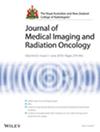Imaging of Adrenal Incidentalomas: What Actually Happens in Everyday Clinical Practice?
Abstract
Introduction
There are numerous guidelines offering varying advice on the management of adrenal incidentalomas. The American College of Radiology (ACR) white paper recommends no follow-up for lesions with benign appearances. Our aim was to audit the indications for adrenal CT in the context of the ACR recommendations and to assess the long-term follow-up and outcome of these incidental lesions.
Methods
A retrospective cohort study was performed identifying patients who had undergone adrenal CT from 1 January 2016 to 31 December 2018. Patients with symptoms of adrenal hypersecretion and malignancy were excluded. Radiology reports were analysed, with collected data also including patient demographics, referring team, lesion characteristics, radiologist recommendations, biochemical tests and histology.
Results
A total of 168 adrenal CTs were performed in 130 patients during the study period. 88 CTs (52%) were not in accordance with the ACR recommendations, as they were for the evaluation of adrenal incidentalomas previously characterised as benign. 93% of lesions had benign imaging appearances, none of which demonstrated evidence of malignant transformation. 70% of patients with benign-appearing lesions had excess imaging deemed not required as per the ACR recommendations.
Conclusion
A large proportion of adrenal CTs are performed to evaluate incidental lesions previously characterised as benign. The ACR white paper recommends that these do not require further imaging; however, in most cases, this is not being followed. Radiologists should be encouraged to recommend no follow-up for benign-appearing adrenal lesions in accordance with the ACR recommendations and have confidence that it is reasonable and safe to do so.

 求助内容:
求助内容: 应助结果提醒方式:
应助结果提醒方式:


